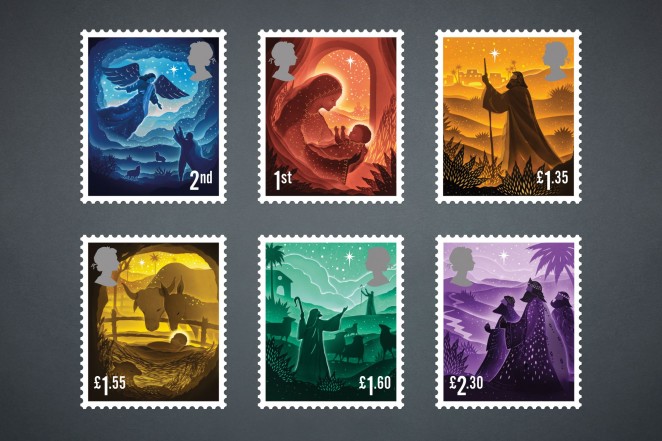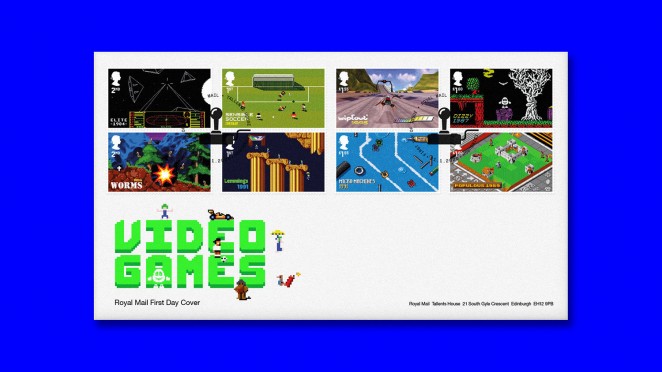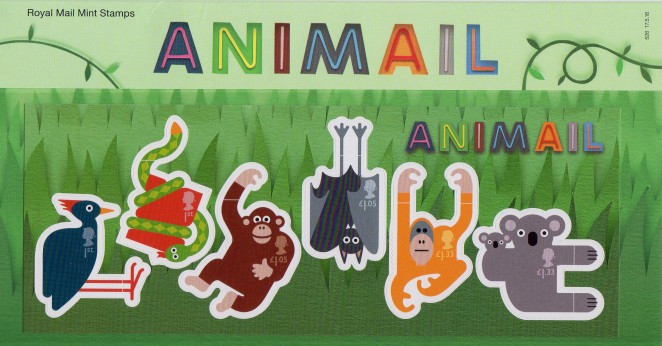When I was young, my uncle gave me his stamp collection. I was instantly captivated by all these beautiful miniature artworks from across the world. I would spend hours poring over them, organising and reorganising them, by colour, or by countries that I’d never even heard of, trying to work out how they created such magic in the tiniest of spaces.
Today, that collection is still here on the shelves in our studio, and we refer to it as we create designs like those for last Christmas’s Royal Mail stamps.

It was a privilege to work on that project, but as an adult I’ve discovered the truth of what I suspected as a child: designing for small spaces is incredibly dififcult. To create something that’s visually rich and interesting but doesn’t pare back the content too much, to push boundaries without dumbing down the subject, to resist the temptation to add in too much detail – it’s one of the most interesting challenges we face as designers.
So, how to get it right? Here’s what we’ve learnt about how to design successfully for small spaces.
Bold concepts
With any design project the first and most important piece of advice is to take time to understand the brief and the audience, but it is especially important here. Specialist subjects have harsh critics. In the same way, be sympathetic to the subject matter, paying attention to its detail and tonality. And be mindful of the practicalities. For example, on stamps there is the furniture - the Queen’s head and the price need to be in one of the corners and this will affect your design.
However, don’t let this inhibit your creativity. Even in the smallest space there is scope for fresh concepts and bold new directions. Look at the work Studio Sutherland did with the stamps marking the centenary of Agatha Christies’s first crime novel and the 40th anniversary of her death. Each stamp contained hidden clues in the form of micro text, UV and thermochromic ink, depicting key scenes and characters from six iconic novels. Not only were they beautiful but it was also fun trying to work out the clues as the narrative unfolded.

Working in miniature
You should bear in mind that the design will also need to work for larger materials, like marketing assets, so set it up for at least 400% of the minature stamp design, but be careful not to work at too large a scale. Doing so can lead you into a false sense of how much detail you can include within the stamps.
These are essentially very small artworks, and details created at larger scale will simply be lost. This is as true of the subject matter as it is of the design. Keep narratives and messages simple. If they get too complex they will simply be lost. The presentation packs, miniature sheets, first day covers and other collateral are all growing in importance and offering opportunities for us to continue the narrative.
Be sure to plan in an early testing phase. This is where you’ll see how your designs play out in reality, and if you do it early enough you will have enough time for the likely multiple rounds of amends. The more you do these projects the more you get a feel for what works in the space, which details are relevant, which can be left out and which need enhancing.
New technologies
Consider how new technologies can enhance your work here. We’re seeing more and more experimentation and play in printing techniques, such as UV and thermographic inks. Supple Studio used this brilliantly with its recent series of stamps celebrating classic video games from the Eighties and Nineties. A month or so after launch the team revealed that if you cast UV light on each stamp you see a typographic message from the original gameplay.

It’s not only inks and printing techniques where we’re seeing this sort of clever innovation. The "Animai" stamps which were die cut so different animal shapes break away from conventional squares or rectangles were an interesting example of innovation in format.

An evolving art form
Designing for small spaces is a specialist area but it’s developing rapidly. We’re seeing a higher and higher quality of imagery and photography, and as technology and software becomes more advanced, so does the visualisation, artworking and retouching capabilities for the visuals used on stamps.
Designing small spaces is as exciting today as it was when I was a small girl leafing through my uncle’s collection, and there are many brilliant examples emerging today that hopefully will be inspiring the designers of tomorrow.
by Charlie Smith, Founder, Charlie Smith Design






